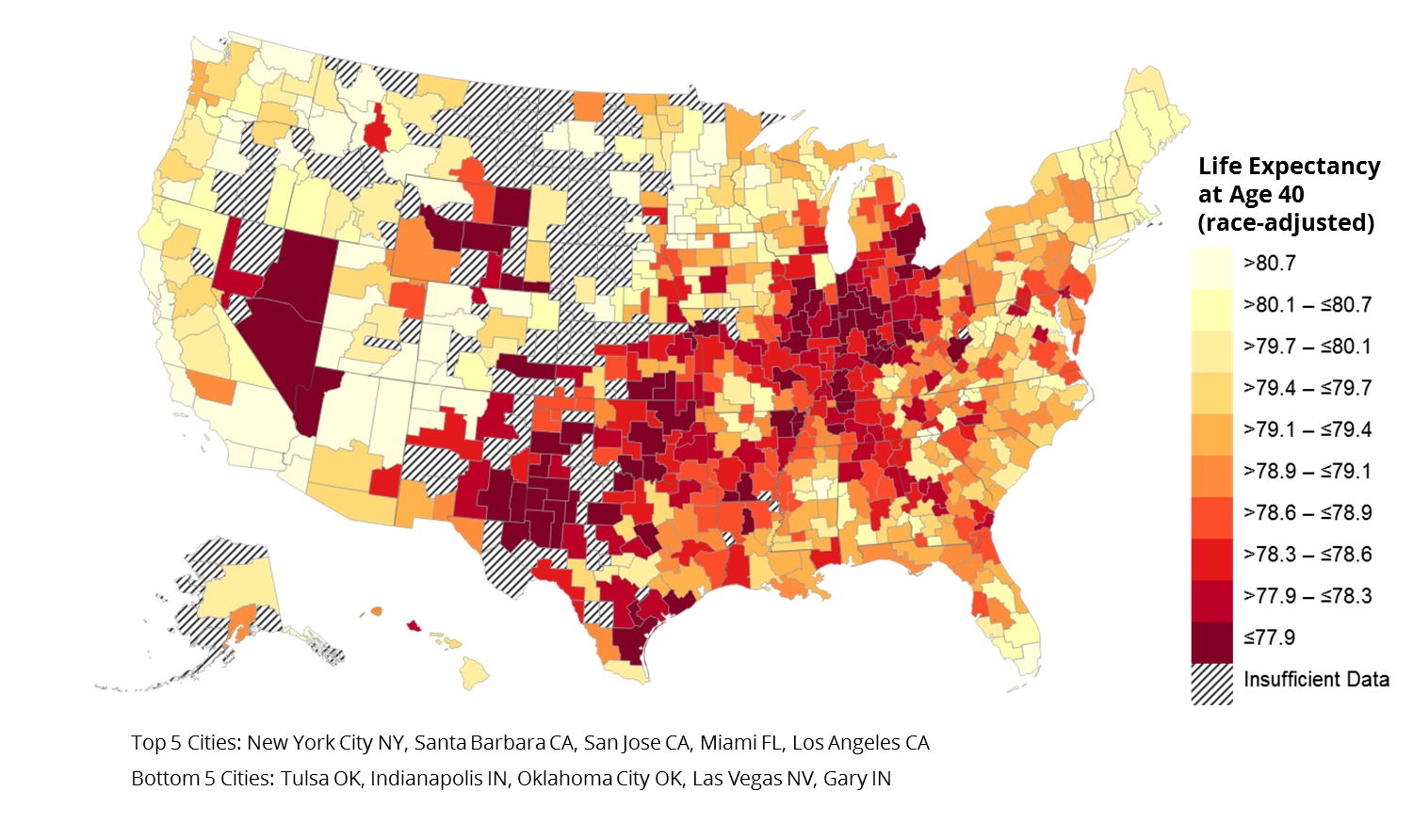A new paper finds that the gap between the life expectancies of the rich and poor increased in recent years.
By Dwyer Gunn
A child sits on a rocking-chair on the verandah of a house in the rural slum area of Greenville, Mississippi. (Photo: Harry Benson/Getty Images)
Earlier this week, a team of economists published a paper in a somewhat unexpected outlet — the Journal of the American Medical Association. The paper, authored by Raj Chetty, David Cutler, and their colleagues, analyzed the relationship between income and life expectancy over a 15-year span. Unsurprisingly, the rich people in the data set lived longer—not exactly a surprising result; wealthier people often have better access to health care and more time and money to devote to exercising and dieting. But the researchers also uncovered some interesting new truths about income and life expectancy: Just as income and wealth inequality have risen in recent years, so, too, has life expectancy inequality. Between 2001 and 2014, the wealthiest five percent of Americans gained three years of life expectancy, while the poorest five percent saw no increases at all. Today, the very wealthiest Americans can expect to live 10 to 15 years longer than the very poorest Americans.
“These differences are very, very troubling,” Cutler told the Harvard Gazette. “The magnitude is startling. You might expect two or three years of life differential — which is roughly what we would get by curing cancer — but 10 or 15 years … it’s an immense difference. We don’t know exactly why or what to do about it, but now we have the tools to ask those questions.”
Another equally troubling finding in the paper: While rich people live longer pretty much everywhere, the life expectancies of the poor vary dramatically by geographic region. The figure below illustrates the life expectancies of those in the bottom quartile:

(Map: J
ournal of the American Medical Association)
Poor people living in the best cities—i.e. those with the highest life expectancies—live approximately five years longer than those living in the poorest cities, a somewhat staggering difference. “To put these area-level differences in perspective, the Centers for Disease Control and Prevention estimates that eliminating all cancer deaths would increase life expectancy by approximately 3 years,” the authors wrote in a summary of the paper. “Hence, it is as if low-income men in New York and San Francisco — which have the highest levels of life expectancy — are immune from cancer, while men in Detroit or Indianapolis — which have low levels of life expectancy for the poor — are not.”
Life expectancies for low-income Americans were the worst in Nevada and eight Midwestern industrial states — Michigan, Ohio, Indiana, Kentucky, Tennessee, Arkansas, Oklahoma, and Kansas — while the poor in wealthier, liberal states like California, New York, and Vermont fared the best. Interestingly, the authors found that low-income life expectancies were not correlated with local measures of quantity or quality of medical care, local income inequality, residential segregation, or labor market conditions (i.e. unemployment). Instead, low-income people had the longest life expectancies in affluent cities with well-educated populations, higher proportions of immigrants, and larger government expenditures.
This new research is the latest in a string of papers documenting the declining health of poor Americans in certain parts of the country, and it offers some novel insights into how to reverse this trend. Local efforts to encourage healthier behaviors benefit both wealthy and poor citizens. And the local social safety net, which is often largest in areas populated by wealthy, liberal citizens, can significantly improve the health of low-income residents.Cities like New York and San Francisco are often the first to ban smoking or trans fats, or to institute a higher minimum wage or paid family leave.
This research is also another demonstration of the importance of place, a topic which Chetty has explored in a number of other papers over the last few years. In past work, Chetty and various co-authors have demonstrated that the neighborhood a child grows up in affects their earnings in adulthood and their likelihood of moving up the income distribution, and that low-income boys are particularly vulnerable to these effects. The research increasingly indicates that the U.S. has become, in the words of Chetty and his co-authors, “a collection of societies.” While some of these societies invest heavily in the health and well-being of all residents, others do the exact opposite, cutting food stamp and welfare rolls, just when such benefits are most desperately needed.
There’s no good place to be poor, but in the United States, there certainly are worse places than others.

||





